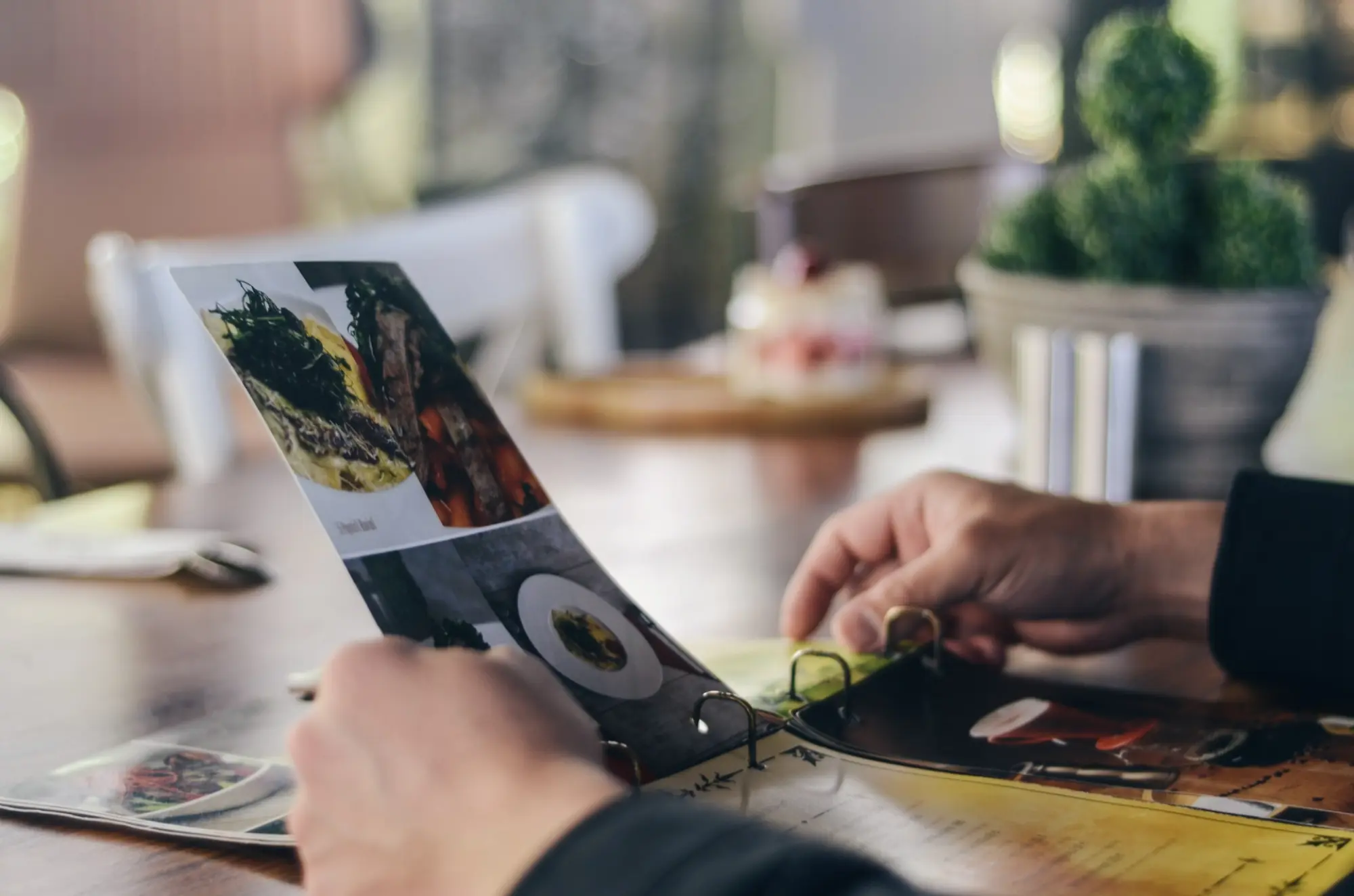As we discussed in a previous post, storytelling has become an essential part of marketing your food business. Today’s consumer is searching for transparency, authenticity and sustainable, ethical business practices; showcasing the people and stories behind your food is a great way to meet this demand. If you’re just beginning to consider the story behind your brand, click here for advice on how to get started.
Remember these key points for communicating your message:
- Be honest and realistic.
- Be consistent.
- Be clear.
- Be relevant.
- Use emotion.
Once you’ve decided which tales to tell, how do you go about it? There are a number of different ways to bring your menu to life.
- If you have a menu with multiple pages, you could utilise the inside front cover or back page. This is ideal for longer chunks of content, whether you’re telling the origin story of your restaurant, highlighting the cultural heritage behind your recipes, sharing your sustainability efforts or explaining your ethics when it comes to your supply chain.
- For recipe-specific stories, such as local sourcing or seasonal ingredients, you might consider including information within the menu descriptions themselves, or adding 1-2 lines of text after each option. However, this will work better on short menus with plenty of surrounding white space; those with more options will quickly become over-crowded.
- Because they’re not limited by physical space, digital menus offer excellent real estate. If you don’t yet have a digital menu, QR codes are a great way to pull interested customers into the digital space using their own devices. Create a page on your website to host your stories, then add a QR code to your physical menu letting customers know where to find them.
- If you do have a digital menu, incorporate imagery where possible. Make it high-quality, visually striking and relevant to your story.
- Make use of interactive components on your digital menu or website. Consider rollover effects, where additional information pops up when a mouse hovers over an element of the webpage. For digital menus, this could be used to show the farmers and producers used to create each dish, perhaps with an image, location map or 1-2 lines of compelling text.
- Don’t feel limited to telling your story on your menu itself; the messaging should be strong and consistent across all of your communications. This includes your website, social media, signage, marketing materials, public relations, in discussions with investors and when training your staff.
- Using social media is a great way to tell your story, curating content that illustrates your values and engages your audience. Share ‘behind the scenes’ content — say, the moment the local fourth-generation baker drops bread to your door at 7am — and post images of your dishes with relevant information communicated in the caption. Like QR codes, you can also use social media to funnel customers to the parts of your website that elaborate further on your story.
- ‘Scrollytelling’ refers to online longform stories characterised by audio, video and animation effects triggered simply by scrolling down, meaning that readers are presented with the full story in an engaging format without any work on their part. Scrollytelling can be thought of as visual storytelling, with ample opportunity for creativity using multiple media: image transitions, video, audio and/or animation. It’s a clever way to draw your customers deeper into your story.
- Video still reigns supreme when it comes to engagement and adds a tangible, human touch. Consider creating videos that tell your story, whether that’s chatting to your favourite suppliers about their produce, or a snippet of the restaurant owner explaining why she’s passionate about zero waste.
For more helpful advice on communicating your story, visit www.tenkites.com.
